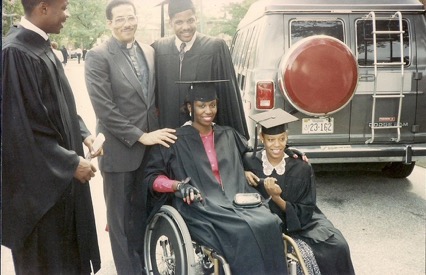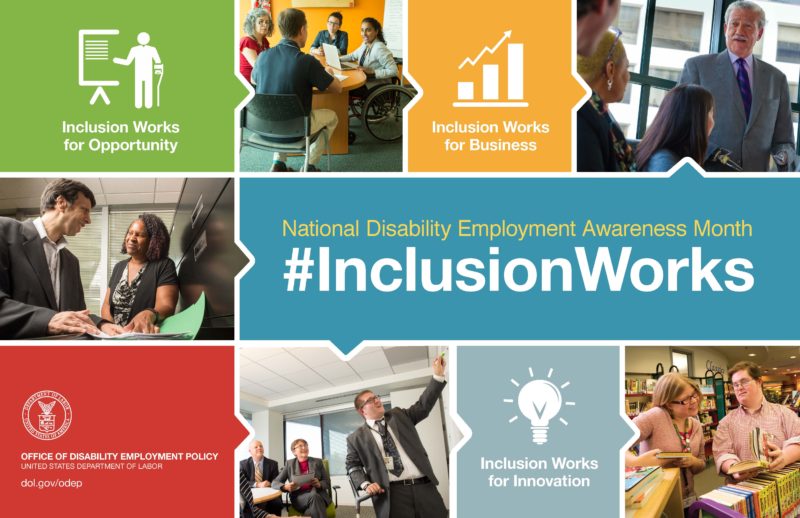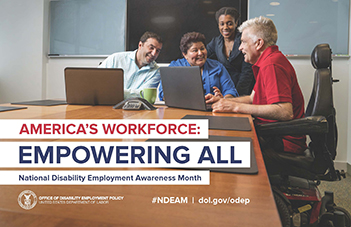 Thirty-two years ago, I was a wheelchair-using college senior at Hampton University in Hampton, Virginia. I knew very little about disability employment or inclusion. I just knew that like many of my peers, I had to get a job. I went through a number of first interviews, two second interviews and didn’t have a job when I rolled across the stage to get my diploma. This pre-dated the Americans with Disabilities Act (ADA) and companies didn’t discuss advancing disability employment the way they do today.
Thirty-two years ago, I was a wheelchair-using college senior at Hampton University in Hampton, Virginia. I knew very little about disability employment or inclusion. I just knew that like many of my peers, I had to get a job. I went through a number of first interviews, two second interviews and didn’t have a job when I rolled across the stage to get my diploma. This pre-dated the Americans with Disabilities Act (ADA) and companies didn’t discuss advancing disability employment the way they do today.
In the 28 years since the ADA became law, a lot has changed. You can easily find articles on ‘disability inclusive best practices’ on social media, and increased focus on engaging the community as employees and consumers. Great strides have been made and I celebrate those. However, there remain uncontested market opportunity for companies that prioritize disability inclusion.
Each October, the country recognizes National Disability Employment Awareness Month. This year’s theme is America’s Workforce: Empowering All. As your company plans events for the month, and beyond, I strongly encourage you to establish metrics for disability inclusion. Otherwise, it’s expendable as corporate priorities shift if not tied to the bottom-line.
I’ve assembled a few resources to spark your thinking on disability inclusion that cover a variety of topics:
- Reasonable Accommodations in the Workplace: The ADA National Network created a fact sheet which serves as a basic overview of reasonable accommodations in the workplace and includes examples of the reasonable accommodation process
- Fashion Styling for People with Disabilities: Stephanie Thomas is founder, stylist and editor-in-chief of CUR8ABLE, a disability fashion lifestyle website. With a passion for accessibility, Stephanie has followed clothing trends for people with disabilities for 24 years and works to empower people every day with advice from her disability fashion styling system. Based in Los Angeles, with followers spanning the globe, Stephanie strives to create beautiful, powerful images that challenge and ultimately change negative perceptions of people with disabilities.
- Unlocking Diverse Abilities: How to Create Accessible Workplace Culture: Jennifer Brown is a leading diversity and inclusion expert, and host of The Will To Change podcast, which uncovers true stories of diversity and inclusion. On this show, she interviews Kathy Martinez, Senior Vice President, Disability Segment Market Brand & Strategy for Wells Fargo & Company, who shares her unique diversity story and how she came to be aware of and involved with efforts to create a more just and equal society. Kathy reveals why creating more accessible products and services ultimately benefits all consumers and why it makes good business sense. She also discusses misconceptions that leaders often have when it comes to workplace accommodations and the return on investment that comes with accommodating the needs of all employees.
- Job Accommodation Network: JAN provides free consulting services for all employers, regardless of the size of an employer’s workforce. Services include one-on-one consultation about all aspects of job accommodations, including the accommodation process, accommodation ideas, product vendors, referral to other resources, and ADA compliance assistance.
- The Hidden Market: The Purchasing Power of Working-Age Adults with Disabilities: The needs of adults with disabilities are frequently overlooked in the marketplace and when businesses are designing and promoting products and services. An April 2018 report from the American Institutes of Research finds that inclusive hiring practices and involving people with disabilities in product development and advertisement can help businesses access a market worth billions of dollars.
- The Power of Family and Friends: Family and friends of people with disabilities is market of approximately 105 million.They influence purchase decisions and respond to companies that are disability inclusive. In this video, I share effective tips to reach this segment of consumers.
I’d love to learn more about how you, or your organization will recognize National Disability Employment Awareness month. Send me an email or post on our Facebook page!
Happy October!
Carmen Daniels Jones
President, Solutions Marketing Group
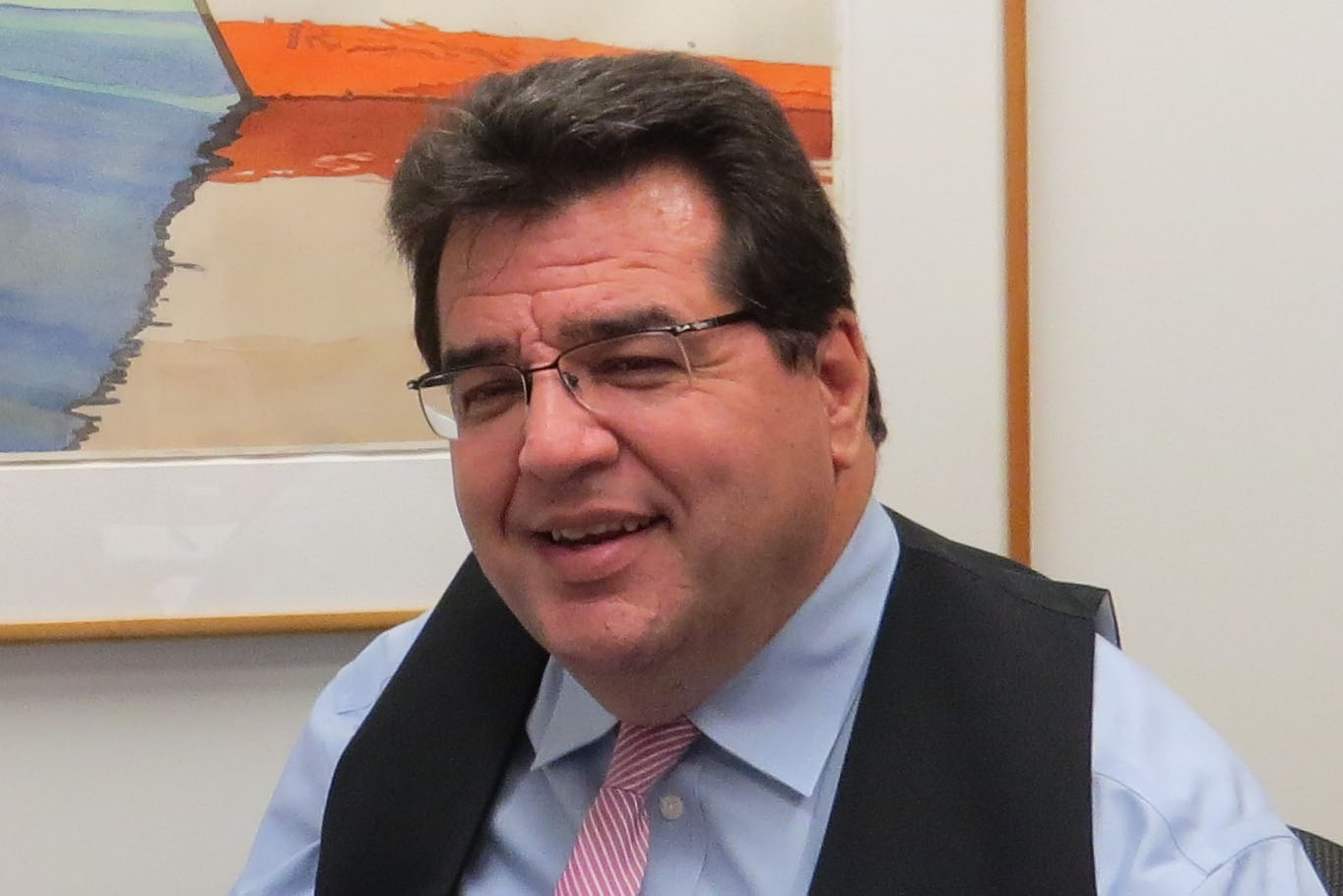 Industry standard-bearer, JPMorgan Chase & Co., has further cemented its commitment to diversity and inclusion with the hire of James (Jim) Sinocchi, Head of the Office of Disability Inclusion. A vanguard in his own right, Sinocchi has promoted disability inclusion awareness for decades. In this new position, he will partner with JPMorgan Chase’s senior leaders to establish consistent standards and processes supporting employees with disabilities and employees who care for family members with disabilities. Prior to joining JPMorgan Chase, Sinocchi served as the co-chair of the IBMers with Disabilities Global Task Force. While there, he collaborated across multiple internal and external channels to create awareness and understanding of policies, initiatives, and Human Resources and Diversity programs. Sinocchi uses his considerable skillset to serve the community as a board member of organizations committed to supporting people living with disabilities. His business acumen makes him sought-after, but his empathy and passion have made him a pioneer. Since 1980, Sinocchi has lived with C5-C6 quadriplegia, the result of a New Year’s Eve surfing accident. In this month’s SMG
Industry standard-bearer, JPMorgan Chase & Co., has further cemented its commitment to diversity and inclusion with the hire of James (Jim) Sinocchi, Head of the Office of Disability Inclusion. A vanguard in his own right, Sinocchi has promoted disability inclusion awareness for decades. In this new position, he will partner with JPMorgan Chase’s senior leaders to establish consistent standards and processes supporting employees with disabilities and employees who care for family members with disabilities. Prior to joining JPMorgan Chase, Sinocchi served as the co-chair of the IBMers with Disabilities Global Task Force. While there, he collaborated across multiple internal and external channels to create awareness and understanding of policies, initiatives, and Human Resources and Diversity programs. Sinocchi uses his considerable skillset to serve the community as a board member of organizations committed to supporting people living with disabilities. His business acumen makes him sought-after, but his empathy and passion have made him a pioneer. Since 1980, Sinocchi has lived with C5-C6 quadriplegia, the result of a New Year’s Eve surfing accident. In this month’s SMG 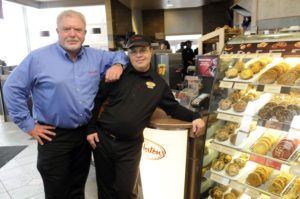
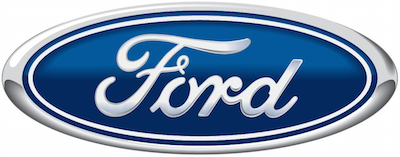 For over a century, the Ford Motor Company has distinguished itself as an innovator in automotive technology and design. With 67 plants worldwide, this industry giant commands a workforce of over 200,000 that will now expand to include persons on the autism spectrum as part of its groundbreaking program FordInclusiveWorks. While similar employment models are increasingly common throughout the business world, what distinguishes the Ford initiative is that positions will be offered at various levels throughout the company rather than in assembly lines alone
For over a century, the Ford Motor Company has distinguished itself as an innovator in automotive technology and design. With 67 plants worldwide, this industry giant commands a workforce of over 200,000 that will now expand to include persons on the autism spectrum as part of its groundbreaking program FordInclusiveWorks. While similar employment models are increasingly common throughout the business world, what distinguishes the Ford initiative is that positions will be offered at various levels throughout the company rather than in assembly lines alone Crucial to achieving those goals has been the partnership Ford built with
Crucial to achieving those goals has been the partnership Ford built with 